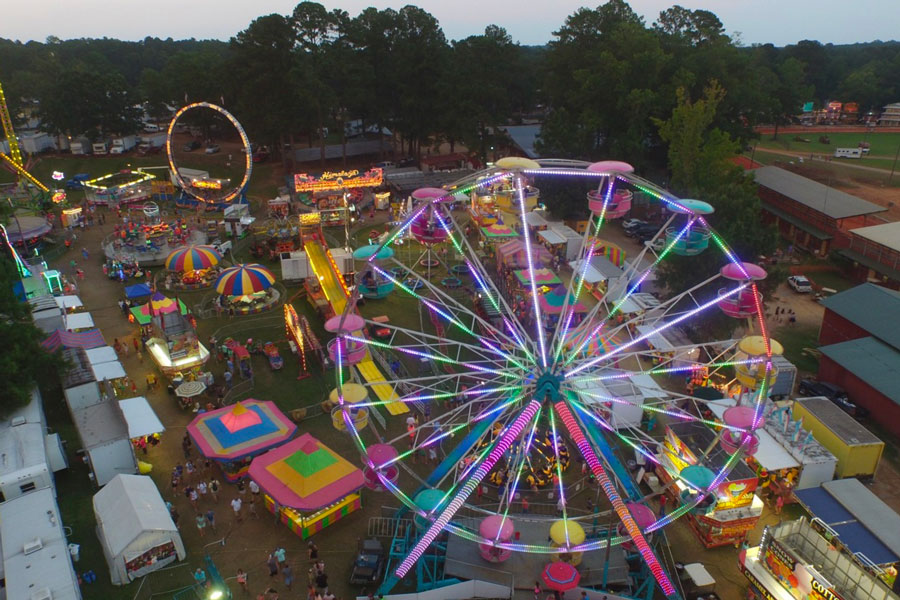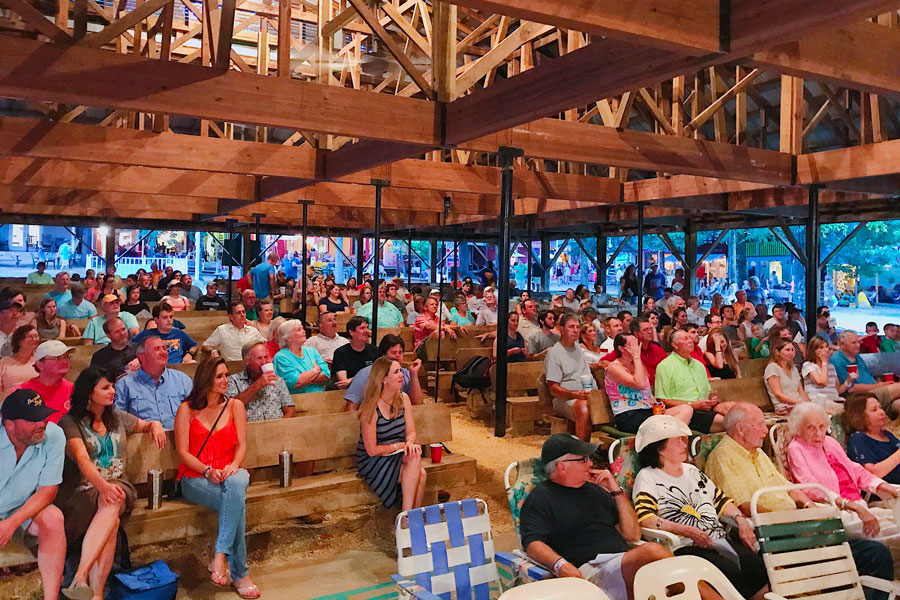
Article by Featured Author
Posted September 2019

The morning of August 2, my family members shook the red dust from our clothes, packed several ice chests of leftover food and drinks, and rubbed our tired eyes. We closed the shutters and doors of Cabin 209 after another rewarding Neshoba County Fair and returned to our separate homes.
Our retreat marked the end of 8 days and 7 nights of festivity, reunion, and mingling with old and new friends — the same activities someone in our bloodline has enjoyed in the same location for nearly 80 years, and which others have enjoyed at the Fairgrounds for 130 years and counting. 1 We will return to the Cabin in a year, stopping there in the offseason only occasionally to ensure that the roof is not leaking and that wasps are not nesting in the kitchen.
My 5-year-old son, who attended his first Fair when he was just 7 weeks old, and my 8-month-old daughter, who attended her first Fair this year, do not yet appreciate how deliciously odd this ritual is. They assume it is normal to live a week each year in a 2-story human-sized chicken coop with clattering AC window units and a big open room on the second floor filled with beds that sleep grandparents, parents, aunts, cousins, siblings, and guests (some recurring, others who are first-timers probably questioning their sanity for having agreed to stay the night).
For my children, the Fair is simply what one does. In time, they will learn that this annual rite is wonderful but not normal. They will discover that other people go to the beach in July.
I hope my children grow to love the Fair as I do, even as they learn that it is unlike any other place. The Fair uplifts my spirit. Conversations are longer and take place on wide porches buzzing with people coming and going. The real world and its rhythms seem somehow farther away than the map indicates.
Like many of you reading this, I spend most of the year in an office chair, staring at a computer screen, talking on the phone, and watching time race away in tenths-of-an-hour that I carefully record. The real world is the world of the clock and the time pad. I am hyper-aware of the passage of time because the legal profession is. Yet the Fair has the power to make me lose that awareness. I relax and let the time pass, probably because that is what the 10,000-or-so 2 people around me seem to be doing.
In this sense, the Fair is like a week-long collective protest of 21st-Century-norms. It is countercultural because it is so deeply traditional. And its traditions are many. Any regular Fairgoer can tell you what to expect from the Heart O’ Dixie Triathlon; the flea market; the exhibits of arts, crafts, and agricultural products at the Exhibit Hall; the antique car show; the horse races; the political speeches; the A.J. Yates, Jr. Memorial Late Night Sing; and the hundreds of smaller planned get-togethers organized by individual cabins. Regular Fairgoers know what to expect because these events occur every year, are handed down generationally, and change very little.
These deeply-rooted traditions are the attributes of “an intermittent yet continuing community, temporary yet permanent.” 3 The Fair’s continuity confers significance and causes otherwise-time-obsessed people like me to slow down and participate at the community’s chosen pace. Each tradition enjoyed at this pace has its own loyal following, but no single tradition is the reason people attend the Fair. The sense of community is the Fair’s animating principle and covers all. People come for an “annual reaffirmation” 4 of family and community that the modern world does not offer.
The Fair’s political speeches make my case. This year I watched a handful of the speeches on Thursday morning of the Fair — generally the biggest political day of all. Hundreds of people sat underneath the pavilion at Founder’s Square. Hundreds more, like me, assembled in the sawdust-covered perimeter around it. (I saw several CABA members.) People swished their multicolored cardboard fans emblazoned with names and slogans, wore campaign shirts and stickers, and held signs. Some waited behind the stage, hoping to steal a moment with a particular candidate once he or she finished speaking.
One politician after another thundered away onstage, delivering applause lines and jabbing opponents. After people-watching for about 20 minutes, it struck me that the crowd was listening but not closely. Most people chatted with those around them and listened with only one ear. I realized then that even the political speeches—for which the Fair is famous — are not about the speeches themselves. People do not crowd in and around the pavilion in the heat of the day to learn anything substantive, to hear some public policy detail. People like the speeches because the politicians deliver the speeches in a style and setting reminiscent of the distant past. The fans, the shirts, the stickers, and the signs combine with fiery words to make a pageant, of sorts, for the politically-inclined.
Fairgoers take the politicking from there, spending hours after the speeches discussing which politician’s style best fit the atmosphere, who told the best joke, and so forth. And the Fairgrounds are crawling with vote-seekers and political chatter, even in the days before the speeches begin. I have met every consequential Mississippi political figure of the last 30 years face-to-face — not because I’m particularly political, but because the Fair is a uniquely great way for people to connect with the people they elect. 5
Equally, the Fair is a great way for non-politicians to talk to one another about politics, an environment where people tend to be plainspoken about their values. Fair neighbors were determined by a sort-of land rush that their ancestors took part in decades ago. So people are not necessarily clumped together by social status or lock-step ideology. Opposing views are exchanged, mostly with civility.
Simply put, the Neshoba County Fair delivers politics as it delivers everything else: the old-fashioned way. That is its charm and allure. And the speeches, while important, are one part of the whole. My son — who prefers the Ferris wheel to political oratory — is already asking when we can return to Cabin 209. He cannot wait to sleep in that big open room in close-quarters with family and friends. With more than 300 days remaining before the next Fair, it is too early to start a countdown with him. But I am glad he is asking. Maybe the traditions will endure.